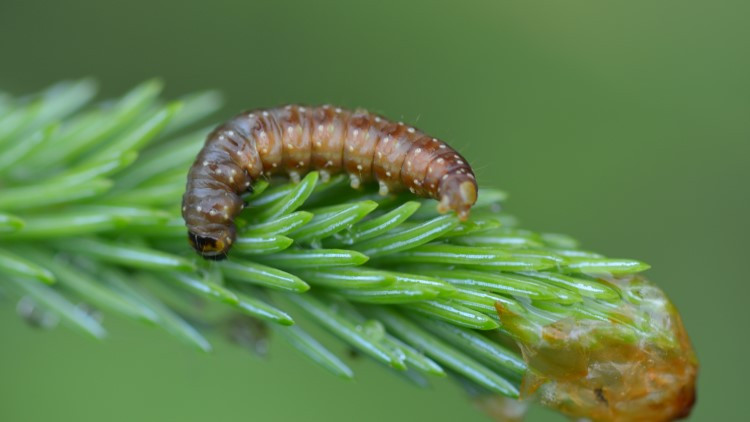Government mail service may be affected by the Canada Post labour disruption. Learn about how critical government mail will be handled.

Overview
The term ‘pest’ is value laden. We must recognize that forest insects and diseases are often essential components of forested ecosystems and play a dynamic role in promoting forest health and resiliency. The same is true for other types of natural disturbance (for example, fire, wind events). However, when forest damaging organisms or other forest disturbance occurs in in ways that place constraints on the management, enjoyment, utilization or ecosystem values of trees and forests, they are considered pests.
Forest pests can threaten the health and vigour of trees and forests. Therefore, they may threaten biodiversity and the many social, cultural, and economic values Albertans enjoy from forested lands. See the list of noteworthy forest pests in Alberta.
In this section, ‘pest’ is an umbrella term for all kinds of forest damaging agents. Many agents can have negative effects on the health of trees and forests. Some are living (biotic), while others are non-living (abiotic).
Table 1. Examples of biotic and abiotic agents
| Examples of biotic agents | Examples of abiotic agents |
|---|---|
| Disease-causing organisms | Changing climatic conditions |
| Insects | Drought |
| Parasitic plants | Flooding |
| Mammals | Other severe weather events (hail, ice storms) |
Online pest diagnostic tool
The Alberta Forest Pest Diagnostic System is an online database of host trees, symptoms, biology, impact, terms and images related to tree pests in Alberta. Search by symptom, pest common name or tree, and find pest management information.
Noteworthy forest pests
Learn how forest pests and damage agents negatively impact Alberta trees and forests.
Integrated pest management
Integrated pest management (IPM) focuses on the prevention of pest outbreaks and, if justified, control of pests using multiple tools. The concept of IPM was created to address the problems associated with the heavy reliance on chemical control in agriculture and to provide a framework for making economically sound management decisions. Over-use of pesticides leads to soil and groundwater contamination and encourages the development of pesticide resistance. Resistance develops when a small portion of the pest population survives exposure to a pesticide because of their genetic makeup. The survivors pass along this resistance to their offspring and, over time, the population develops resistance to that pesticide.
Another issue can occur when using broad-spectrum pesticides. This type of pesticide is not species-specific; it harms not only the target pest but also the non-target insects like pollinators or natural enemies that help keep the pest population under control. Finally, pesticide application can cause or promote outbreaks of secondary pests. This happens when the suppression of the target pest releases a non-target insect from interspecific competition, which allows it to outbreak.
Accurate pest identification is essential to IPM. This is important because prevention, monitoring and control activities are specific to a particular pest. Once the pest has been identified, the forest manager can learn about the pest’s life cycle and population dynamics, and the host response to the pest. This information enables the tailoring of prevention, monitoring and control activities to target the correct insect at the most vulnerable life stage using the effective monitoring and treatment methods.
Resources
- Pests of Deciduous Trees and Shrubs (guide)
- Integrated Pest Management (Government of BC)
- Pests, diseases and weeds
- Hazards of moving firewood (Canadian Food Inspection Agency)
Contact
Connect with Alberta Forest Health and Adaptation: [email protected]
Talk to Alberta Forestry staff in your area: Forestry Area Office Contacts







